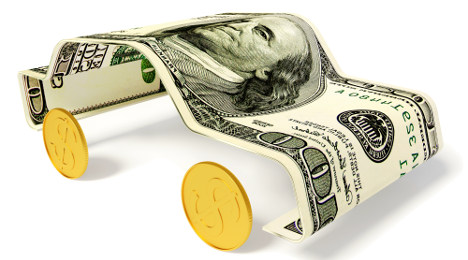S&P, Fitch discuss investors’ ongoing ABS concerns

What’s happening with subprime auto ABS continues to be on the minds of investors, according to recent analysis from both Standard & Poor’s as well as Fitch Ratings.
In fact, S&P Global Ratings released another report this week with what could be considered an ominous-sounding title: “Longer-Term Subprime Auto Loans Are Leading To More Back-Loaded Losses.” Credit analysts Rahel Avigdor and Ines Beato focused their attention on how a significant amount of subprime vehicle installment contracts have expanded from terms of 60 months to 72 months and beyond.
“In rating auto loan securitizations, we generally perform cash flow analysis under different scenarios to test the payment structure. Loss timing, among other assumptions, can make a substantial difference in the cash flows generated by the asset pool,” Avigdor and Beato wrote in the report obtained by SubPrime Auto Finance News. “Particularly with back-loaded losses, the transaction's credit enhancement may be released after the enhancement targets are reached. The remaining enhancement may not be sufficient to absorb its tail-end losses.
Avigdor and Beato acknowledged that back-loaded losses can occur in prime, non-prime or subprime transactions due to a variety of reasons.
“In addition to longer loan terms, changes in the economic environment and servicing procedures such as extensions can contribute to these losses,” they said. “Regardless of the reason, when rating a transaction, to the extent we believe back-end credit risk exists, we model scenarios that consider back-loaded loss curves.”
Avigdor and Beato went on to explain that they evaluate various structural features that minimize or delay the likelihood of releasing credit enhancement during periods of low losses. The features they mentioned were elements such as overcollateralization targets, performance triggers (commonly found in subprime auto ABS), credit enhancement floors and non-amortizing reserves.
“For example, we can apply a back-loaded loss curve to test the effectiveness of a loss trigger,” Avigdor and Beato said. “Although a loss trigger is designed to protect against higher-than-expected losses, the thresholds are usually structured based on historical loss distribution patterns.
“If peak losses occur later than the historical pattern, triggers may not be tripped until much later when excess spread is absorbed by losses, and nothing is left to build credit enhancement. In this case, the trigger provides little value,” they continued.
“Given the increasing percentages of longer-term loans (75-plus months) that we’re seeing, and thus more back-loaded loss-timing curves, we’ll continue to update issuer-specific loss curves and refine our cash flow assumptions as appropriate,” Avigdor and Beato went on to say.
Meanwhile over at Fitch, analysts pointed out that they’ve seen plenty of industry reaction to when they reported the 20-year high in U.S. subprime auto ABS delinquencies they spotted back in February. Still, Fitch says that rising delinquencies are not the concern foremost on the minds of investors.
“Instead, chief among their concerns is the quickening pace of new deals among the newer, less-established names in the space and the subsequent intensifying competition,” Fitch said.
“Investors have also expressed concerns over the ability of some of these newer independent finance companies to fund their servicing platforms, how they are adhering to their own underwriting policies, and how they can respond to the rigors of regulatory scrutiny inherent in today's environment,” the firm continued.
While the recent 20-year high in subprime auto delinquencies merits close watch, Fitch managing director John Bella explained that it’s important to note that this number is a fraction of the total number of subprime auto loans being originated.
That said, Bella insisted much of the weaker subprime auto ABS performance stems from many of these newer players who have never securitized prior to the last couple of years.
In fact, the most established subprime auto originators (AmeriCredit and Santander Consumer USA — the only subprime auto issuers currently rated by Fitch) make up less than half of Fitch’s subprime auto ABS index today. That’s compared to more than 90 percent back in 2009 and 2010.
Fitch determined that the remainder — nearly 60 percent — of the composition emanates from these newer companies, many of which have to rely on ABS more exclusively for their funding as opposed to the more established lenders.
“What’s more, these companies are and will continue to compete in the weaker end of the subprime market as competition intensifies. This coupled with a softening wholesale market will contribute to higher subprime auto losses in the coming months,” Fitch said.
In a separate video Fitch posted recently, Bella delved into another component of the market he found interesting. In 2010, he noted 60-day delinquencies stood at 4.76 percent while the unemployment rate was at 10 percent. Earlier this year, Bella explained those delinquencies climbed to 5.16 percent, but the unemployment rate dropped to 4.9 percent.
“Clearly we have a recessionary-type performance going on in a market while certainly not robust from an economic standpoint is clearly outperforming expectations if you look at unemployment or jobless claims. This is a fairly telling point and certainly gives us direction to where we think this sector could be headed,” Bella said.

 View The Latest Edition
View The Latest Edition

